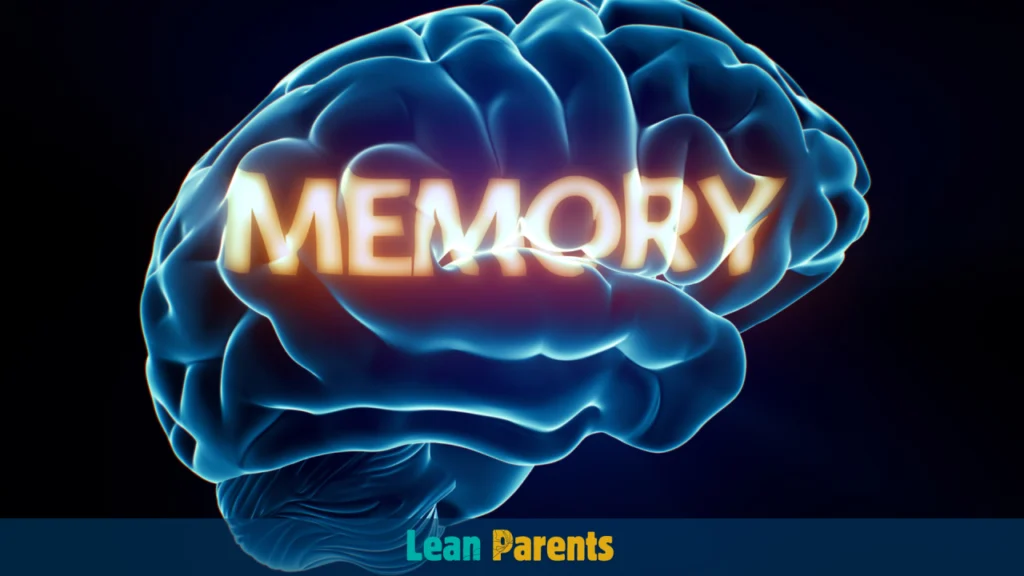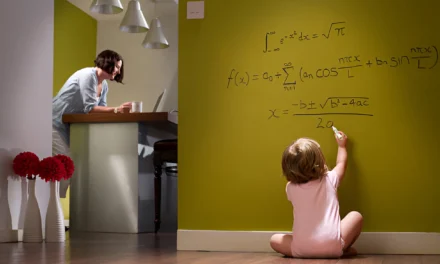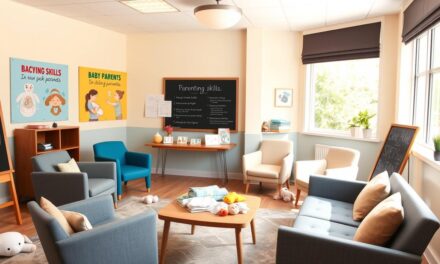I remember my schooldays and the struggles with rote learning. It was all about memorizing facts and formulas without really getting them. This made me feel frustrated and disconnected1. Despite this, rote learning is still common, even though research shows it’s not as good as other ways to learn1.
In this article, we’ll look at why rote learning doesn’t work well. We’ll also find better ways to help our kids learn. By using the latest in memory science and focusing on the student, we can help our kids become confident, creative, and critical thinkers12.
Key Takeaways
- Rote learning, based on repetition, has been shown to be less effective than active recall and memory techniques.
- Rote learners typically have lower retention rates compared to those using methods like the Memory Palace.
- Rote learning can hinder critical thinking and problem-solving skills, leading to passive learning and limited knowledge application.
- Meaningful, multi-sensory learning approaches that promote understanding and engagement can lead to better academic outcomes.
- Experts recommend personalized learning plans that combine various teaching methods for optimal results.
Understanding the Traditional Approach to Memorization
Rote learning has been a key teaching method for centuries. This method involves repeating information until it’s memorized, often without understanding the concepts3. Schools still use it because it’s seen as effective for memorizing facts, dates, and formulas3.
The History of Repetitive Learning Methods
Rote learning started in ancient times. Students memorized texts, poems, and scriptures by repeating them over and over. This was seen as a good way to share knowledge when books were scarce4. Over time, it became a mainstay of traditional teaching, used in many subjects and grades.
Common Applications in Education Systems
Rote learning is linked to memorizing multiplication tables, spelling, and historical dates3. It’s great for remembering specific info, making room for more complex skills3. Also, spaced repetition helps keep information in memory, especially in online learning3.
Why Schools Still Use This Method
Schools keep using rote learning because it’s simple and works well in some areas3. It’s useful for remembering key facts, terms, and sequences3. But, its limits in promoting thinking and retention spark debates about its role in education3.
| Rote Learning Benefits | Rote Learning Limitations |
|---|---|
Rote learning has its uses, but a mix of memorization and meaningful learning is key. It helps students understand deeply and think critically345.
The Science Behind Memory Formation

Learning how our brains form memories is key to better learning. Memory formation is complex, involving both short-term and long-term memories6.
Short-term memory holds info for a short time, making it easy to recall quickly. This is what rote learning uses, where we just memorize stuff without really understanding it7. Long-term memory, on the other hand, needs deeper encoding. It makes our memories last by connecting them in meaningful ways6.
The neuroscience of learning shows rote learning mainly uses short-term memory. This is why we often forget what we learned this way. To keep memories long-term, we need to understand and practice recalling them deeply6.
| Characteristics | Short-Term Memory | Long-Term Memory |
|---|---|---|
| Duration | Temporary (seconds to minutes) | Persistent (hours to years) |
| Capacity | Limited (7 ± 2 items) | Vast |
| Encoding | Shallow, based on sensory input | Deep, involving meaning and connections |
| Retrieval | Rapid, but easily forgotten | Slower, but more persistent |
Knowing how memories are made helps us teach better. It leads to lasting knowledge and understanding678.
“Rote learning can be useful for learning basic facts, vocabulary words, or math formulas, but it has limitations in fostering long-term retention and deeper understanding.” – Dr. Aldrich Chan, Neuropsychologist
What Is Rote Learning and Its Core Principles
Rote learning means repeating information over and over. This includes things like the alphabet, numbers, and scientific terms910. It’s good for learning the basics in subjects like reading and science11. But, it’s often seen as not teaching deep understanding.
Key Characteristics of Memorization Through Repetition
Rote learning is about remembering facts without really understanding them. It acts like a filing system in the brain9. But, it doesn’t help with thinking deeply or solving problems.
Traditional Implementation in Classrooms
In old-school classrooms, rote learning is a big deal. Teachers use flashcards and outlines to help students remember stuff11.
Common Misconceptions About Its Effectiveness
Many think rote learning is the best way to learn. But, it’s not the only way. It’s good for starting, but it can hold back creativity9. Also, being good at remembering stuff doesn’t mean you’re smart9.
In short, rote learning is important, but it’s not everything. It’s a starting point for deeper learning9.
Knowing how rote learning works helps teachers and parents. They can help students learn well-rounded and deeply91011.
The Hidden Costs of Mechanical Memorization

Rote learning and mechanical memorization might seem quick, but they have big hidden costs12. Teachers debate how much times tables students should memorize by Year 412. But, this focus can lead to a shallow understanding and poor long-term memory12.
Our working memory can only hold about seven items at a time12. This means kids who memorize times tables might struggle with slightly different math problems12. So, memorization is just the first step, not enough on its own12.
Students who just memorize without understanding struggle to use their knowledge12. This can slow down their learning and limit their creativity12.
It’s key to think about the usefulness of what we memorize and how to learn it best12. Mechanical memorization often misses these important points, leading to unseen drawbacks in a child’s education.
| Key Findings | Impact |
|---|---|
| Luria’s research on Solomon Shereshevsky demonstrated an immense memory capacity with no apparent limits to retention, even after many years.13 | This suggests that the human memory has remarkable potential, but rote learning may not tap into this potential effectively. |
| Vannevar Bush’s 1945 proposal for a mechanical memory extender, the memex, inspired computer pioneers and led to significant ideas in the history of computing.13 | This highlights the value of leveraging technology and innovative approaches to enhance learning and memory, rather than relying solely on traditional memorization methods. |
| The average time to review a card in Anki is approximately 8 seconds, while conventional flashcards require a review once a week, resulting in a total review time of over 2 hours per card over 20 years. Anki’s review intervals expand to over a year, with the average interval currently at 1.2 years and rising, resulting in more than a 20 times savings in review time compared to conventional flashcards.13 | This data demonstrates the efficiency and effectiveness of spaced repetition techniques, which can significantly reduce the time and effort required for long-term retention, compared to traditional rote memorization methods. |
While memorization is part of learning, it shouldn’t be the main focus. Mechanical memorization has hidden costs that can harm a child’s education and growth. By moving beyond rote learning and embracing better strategies, we can help students reach their full potential.
Today, many educational theories criticize memorization14. They believe it doesn’t lead to true knowledge or critical thinking14. Yet, some argue that memorized facts can be a starting point for deeper understanding and critical thinking14.
“Transmitting knowledge acts as a foundation for critical investigation.” – John Dewey14
By understanding the drawbacks of mechanical memorization and seeking better learning methods, we can support kids’ growth and improve their critical thinking121314.
Impact on Critical Thinking and Creativity
Rote learning focuses too much on memorizing facts. This can hurt students’ ability to think critically and be creative. Only a small number of classrooms focus on higher-order thinking skills15. This means students often look for just one right answer, not many solutions15.
Students may find it hard to use what they know in new ways. They might also struggle to link different ideas together. These skills are key for doing well in school and later in life.
Reduced Problem-Solving Abilities
Students who just memorize facts don’t do as well in solving problems. Employers want people who can think critically, but schools often don’t teach this15. This gap can make it tough for students to be creative and solve complex problems.
Limitations in Knowledge Application
Rote learning doesn’t help students apply what they learn. Classrooms with more low-income students get fewer assignments that match their grade level15. This limits their chance to develop critical thinking and problem-solving skills.
This problem can affect students for a long time. They might find it hard to use what they learn in real life or connect different ideas.
Effects on Innovation Skills
In today’s world, innovation and being able to adapt are very important. But rote learning holds students back. Studies and resources like the “Increase Critical Thinking” series stress the need for critical thinking and creativity15.
Yet, many schools still use old teaching methods. This can stop students from becoming the innovative thinkers needed for progress.
| Skill | Rote Learning Impact | Alternatives |
|---|---|---|
| Critical Thinking | Convergent thinking, limited problem-solving abilities | Encourage divergent thinking, focus on application and problem-solving |
| Creativity | Stifles innovation and exploration of multiple solutions | Promote hands-on learning, expose students to diverse perspectives |
| Knowledge Application | Difficulty transferring learning to new situations | Emphasize understanding concepts, create opportunities for practical application |
By changing how we teach, we can help students become adaptable and innovative. This is key for success in the 21st century. Learn more about how memory works and how to learn effectively.
Why Children Struggle with Pure Memorization
Children often find it hard to memorize because their brains are wired to learn through doing and understanding. They have their own way of learning, and just repeating facts doesn’t work for everyone. Research shows that a mix of memorizing and understanding is best. Without meaning, kids struggle to remember and use what they’ve learned.
As kids grow, they move information from short-term to long-term memory. This process is limited, and research backs it up. It shows how much info our brains can hold at once.
Methods like flashcards and repetitive writing don’t work for all kids. They struggle to remember things like times tables and state capitals. This shows we need to try different ways to help each child learn best.
| Memorization Technique | Effectiveness |
|---|---|
| Flashcards | Ineffective |
| Mnemonic Devices | Ineffective |
| Repetitive Writing | Ineffective |
| Catchy Songs with Hand Gestures | Effective |
| Associating Facts with Household Items | Effective |
| Memory Palaces or Method of Loci | Effective |
| Spaced Repetition Apps | Effective |
When dealing with memorization issues, we must think about each child’s learning style, cognitive development, and memory challenges. By understanding how memory works and trying different methods, we can help kids. This way, they can improve their memorization skills and do well in school and beyond.
The Link Between Stress and Repetitive Learning
Rote learning can deeply affect a student’s mental health16. The need to memorize lots of info quickly can cause stress and anxiety16. The pandemic made things worse, adding to students’ stress16.
Anxiety in Academic Performance
Rote memorization can lead to performance anxiety16. Students feel stressed about their future, health, and jobs16. This can make them less motivated and less confident in their learning16.
Long-term Psychological Effects
The effects of rote learning can last a long time16. The pandemic has made many people anxious and fearful16. This can lead to depression, burnout, and less ability to think critically16.
Teachers and parents need to find better ways to teach16. Play strategies and active recall can help17. These methods can reduce stress and anxiety and support students’ mental health16.
| Factors Influencing Student Stress and Anxiety | Impact on Mental Health |
|---|---|
|
|
“The COVID-19 pandemic generated fear and anxiety (negative emotions) in many individuals as a response to managing environmental changes and trying to maintain well-being.”16
Understanding the link between rote learning and mental health is key16. We can create a better learning environment that supports students’ well-being16.
Modern Alternatives to Traditional Memorization
Modern education is moving away from just memorizing facts. It now focuses on deeper understanding and critical thinking. These new methods help students connect with what they learn and remember it better over time.
Active recall is one such method. It makes students think hard to remember information, not just look at it. Studies show it makes learning better and helps students do well in school18. Another good strategy is spaced repetition. It reviews material at different times to help students remember it more easily.
- Mind mapping helps students organize and connect ideas. It boosts understanding and problem-solving skills.
- Working together on learning tasks improves critical thinking and communication. This is what collaborative learning does.
- Gamification makes learning fun by adding game elements. It keeps students interested and helps them learn better.
These new ways of learning make school more exciting and useful. They help students not just remember facts but also use them in real-life situations. These methods prepare students for the challenges of today’s world19.
| Traditional Approach | Modern Alternatives |
|---|---|
| Rote memorization | Active recall, spaced repetition |
| Passive learning | Mind mapping, collaborative learning |
| One-size-fits-all curriculum | Personalized, technology-enabled learning |
By using these new learning methods, teachers and parents can help students reach their full potential. They give students the skills and knowledge needed to succeed in today’s fast-changing world1819.
Active Recall: A Superior Learning Method
Rote learning, or just memorizing stuff over and over, is not the best way to learn. Active recall techniques are a better, science-backed way to learn and remember things for a long time20.
Implementation Strategies
Active recall means you actively try to remember things instead of just looking at them. Good ways to do this include making flashcards, teaching others, and writing down notes without looking at your book20. This helps you find out what you don’t know and fix any wrong ideas20.
Success Rates and Studies
Studies show that active recall is way better at keeping information in your head than just memorizing it. One study found that active recall kept 88% of information, while rote learning only kept 28%20. Also, using active recall with concept maps makes learning hard stuff even better20.
Unlike just sitting there and learning, active recall like testing yourself over and over is key to learning well20. Testing yourself often helps you remember things longer and makes you less nervous about tests. This leads to better grades and saves you time20.
| Learning Method | Retention Rate |
|---|---|
| Active Recall | 88% |
| Rote Learning | 28% |
The science is clear: active recall is a better way to learn than just memorizing stuff20. By really working with the material, you make stronger connections in your brain. This makes it easier to use what you’ve learned in different situations20.
Engaging Multiple Senses in Learning
Multisensory learning uses many senses to learn, making it easier to understand and remember21. It combines visual, auditory, kinesthetic, and tactile elements. This way, it meets different learning styles and strengthens brain connections21. Using manipulatives, making visual aids, moving around, and interactive tech are all part of it.
Research shows multisensory learning boosts working memory and cognitive development21. It helps students connect new info to what they already know. It also makes learning and remembering new stuff better21.
In nursing school, multisensory learning is a hit for teaching tough topics like Acute Coronary Syndrome21. Teachers use fun stuff like peas, chocolate, and colorful buttons. This makes learning fun and memorable for students21.
The Multisensory Integration Approach Model (MIAM) helps teachers use this method in class21. It’s a seven-step guide to make learning comprehensive and effective21.
By using many senses, teachers can make learning more engaging and diverse21. This not only helps students remember better but also understand deeper. As we keep looking for new ways to teach, multisensory learning is key to unlocking students’ potential21.
Building Strong Mental Connections
Learning is more than just remembering stuff. It’s about making strong connections in our minds. Understanding is key in making these connections. It helps link new info to what we already know22.
This way, we build a network of knowledge that’s easy to use and grow22.
Methods like elaborative rehearsal help make these connections. It involves linking new info to what we already know, using analogies and metaphors22. Also, deep learning techniques help us see how different subjects are connected. This makes learning and remembering easier22.
The Role of Understanding in Memory
Rote learning is just repeating info without thinking about it23. But, research shows it doesn’t stick in our memory as well as understanding does23. Meaningful learning is when we connect new info to what we already know. This makes learning feel real and useful22.
Creating Lasting Knowledge Networks
By making connections and understanding, we build strong knowledge networks22. These networks help us learn more in the future. They also improve our memory, thinking, and problem-solving skills22.
New teaching methods have improved learning. They use things like microlearning and spaced repetition to help learners today23. These methods work well because they match how we learn now, with short attention spans and easy access23.
The spacing effect shows that learning bits of info over time helps us remember better23. This idea has been around since 1885, thanks to Hermann Ebbinghaus23.
By knowing how memory works and using the right learning methods, we can help kids learn well. They’ll have a strong foundation for school and work232224.
Practical Tips for Parents and Teachers
As parents and teachers, we have the power to change how our kids learn. Rote learning helps kids remember simple things like the alphabet and math facts25. But to really help them grow, we need to use more fun and meaningful ways to learn25.
One great way is to make learning active. We can do this by using real-life examples, asking open-ended questions, and doing project-based learning26. Also, using educational games and edutainment apps can make learning fun and help kids remember things better26.
Every child learns in their own way, and we can’t use the same method for everyone. By teaching in a way that fits each child’s style and interests, we create a supportive learning environment26. This method, called personalized learning, makes learning more relevant and successful26.
“Effective learning involves a combination of different techniques tailored to individual children’s needs.”
While it’s important for kids to master basic skills, like math, through repetition, we also need to help them understand the concepts behind these skills27. A mix of memorization, practice, and deep understanding can make learning more engaging and meaningful for kids27.
By using these tips, we can help kids become active learners. They will develop the skills and mindset needed to succeed in today’s fast-changing world26. Together, we can inspire a lifelong love of learning, preparing our children for success26.
Technology and Modern Learning Approaches
Educational technology brings new tools to learning, beyond old methods28. Digital tools and e-learning platforms offer interactive learning, tailored paths, and quick feedback. They engage students in ways traditional methods can’t28.
Technologies like educational apps and virtual reality are changing how kids learn28. They make learning fun, promote teamwork, and boost critical thinking. This makes learning more enjoyable and effective28.
But, it’s important to balance tech with hands-on learning. Digital tools should add to, not take away from, personal and practical learning. This mix prepares students for today’s world28.
Embracing the Power of Blended Learning
Blended learning is a promising tech approach, mixing old and new methods28. It lets students enjoy online resources and classroom learning together28.
Cooperative learning is also becoming popular, where students work in groups28. It boosts thinking and helps students remember information better. Activities like think-pair-share and jigsaw help a lot28.
Technology and new learning methods open up new ways for students to learn and succeed28. By using these methods, teachers can help students develop important skills for the digital age28.
Conclusion
Rote learning has its uses, but today, we should focus more on effective learning strategies, educational best practices, and cognitive development for lifelong learning29. It’s good for young kids and subjects like math and chemistry. But, it can limit critical thinking and deep understanding29.
We should mix active recall, using senses, and tech in learning30. This way, students can remember facts and apply them in new ways. It boosts problem-solving and innovation skills29. This helps them think critically and adapt to new situations, preparing them for the future30.
The goal is to make kids self-directed learners who can solve complex problems creatively30. By moving past rote learning, we can raise a generation of thinkers, problem-solvers, and innovators29.
FAQ
What is rote learning and how does it differ from more effective learning strategies?
What are the drawbacks of relying primarily on rote learning?
How does the science of memory formation explain the limitations of rote learning?
What are some modern alternatives to rote learning that have been shown to be more effective?
How can parents and teachers support their children’s learning beyond traditional memorization methods?
Source Links
- Why Rote Memorization Doesn’t Work (And What to Do Instead)
- 12 Reasons Why Rote Learning Isn’t Effective in Learning – LifeHack
- Rote Learning
- Rote Memorization vs. Meaningful Learning — Is There a Place for Both?
- Rote Memorization Meaning, Benefits & Techniques | ClickView
- Memorizing versus Understanding — The Learning Scientists
- Does Rote Memorization Actually Help Us Learn New Things?
- Prolonged rote learning produces delayed memory facilitation and metabolic changes in the hippocampus of the ageing human brain
- What is Rote Learning? Effectiveness of Rote Learning | Resilient Educator
- Rote Learning vs. Meaningful Learning | Oxford Learning
- Rote learning
- Is it worth trying to memorise facts?
- Augmenting Long-term Memory
- A Reinterpretation of Confucian Philosophy of Education
- Critical Thinking in Education: How to Prepare Students for the Future
- Influence of Stress and Emotions in the Learning Process: The Example of COVID-19 on University Students: A Narrative Review
- When Rote Learning Makes Sense
- Training Vs. Rote Memorization In Learning English: What Are The Differences?
- Why We Need to Move Away from Traditional Learning Methods?
- How To Study Using Active Recall
- Multisensory integration approach, cognitive domains, meaningful learning: reflections for undergraduate nursing education
- Rote Learning vs Meaningful Learning: Which is Better – EuroSchool
- Is Rote Learning Still Effective? | SC Training
- Rote Learning: Retaining Information Without Deepening Its Meaning
- Rote Memorization 101: Meaning, Benefit & Examples for Kids!
- Rote learning | Allison Academy
- Teaching Methods for the 21st Century – Graduate Programs for Educators
- Rote Learning: Definition, Examples, Pros, Cons
- Understanding Rote Learning in Education / Learning Corner





